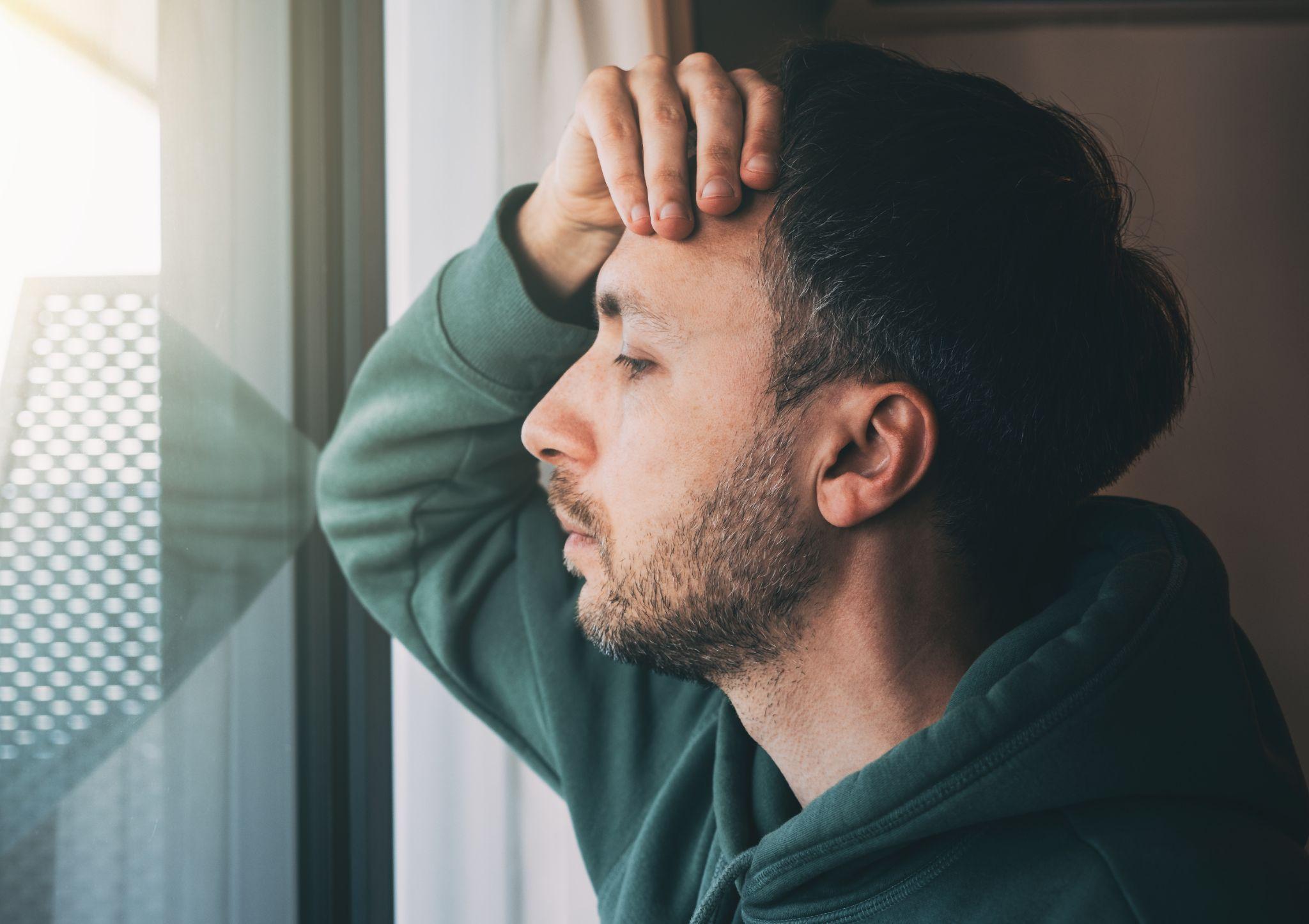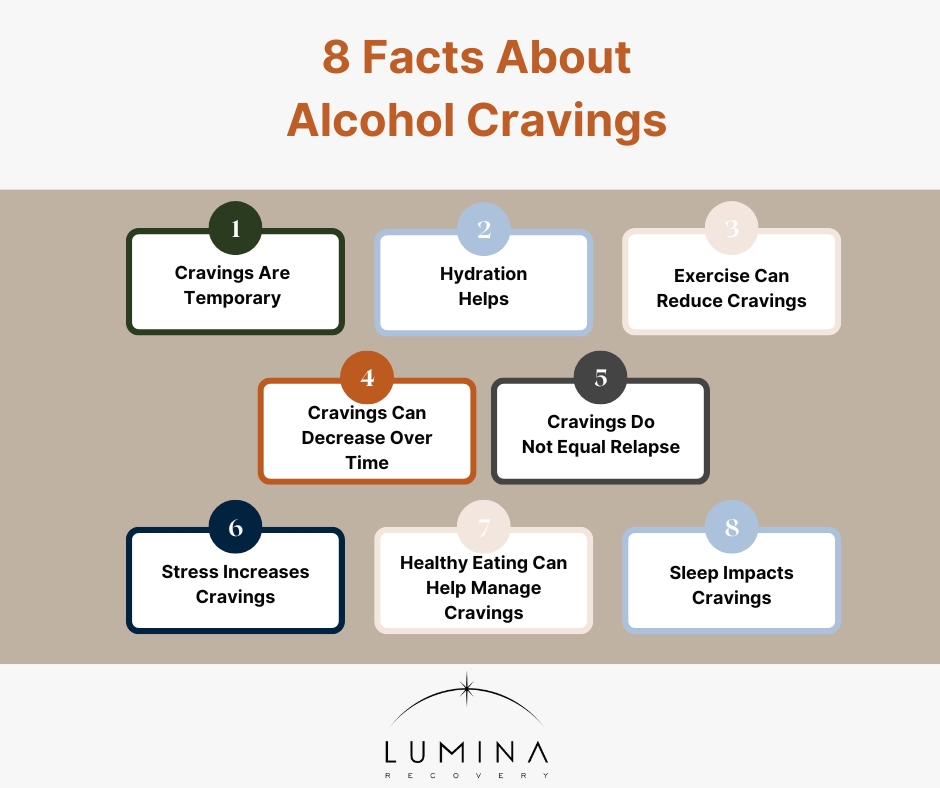Alcohol cravings are a common challenge for individuals in recovery, often posing obstacles to long-term sobriety. Understanding what causes them and how to stop alcohol cravings effectively is crucial for sustaining a healthier lifestyle.
By learning about the psychological, physiological, and environmental factors that trigger cravings, individuals can develop strategies to curb alcohol cravings and stay on track with their recovery journey.
What Are Alcohol Cravings?
Alcohol cravings refer to the intense desire or urge to consume alcohol, often triggered by both psychological and physiological factors. These cravings can be influenced by changes in brain chemistry due to prolonged alcohol use, making them difficult to control without proper strategies in place.
While cravings do not necessarily indicate a relapse, learning how to reduce alcohol cravings is essential for maintaining sobriety.
Causes of Alcohol Cravings
Several factors contribute to alcohol cravings, including:
- Neurological Changes: Long-term alcohol consumption alters brain chemistry, particularly affecting dopamine and serotonin levels, which influence reward and pleasure.
- Environmental Triggers: Certain settings, such as bars, parties, or locations associated with past drinking habits, can trigger cravings.
- Emotional States: Stress, anxiety, depression, and other emotional states can lead individuals to seek alcohol as a coping mechanism.
Common triggers for alcohol cravings include:
- Social Situations: Being around people who drink or in environments where alcohol is present.
- Stress and Anxiety: Work pressure, personal conflicts, or financial struggles can lead to cravings.
- Routine and Habitual Patterns: Certain times of the day or specific activities associated with past drinking behavior.
- Sensory Cues: Smelling alcohol, seeing someone else drink, or even watching alcohol-related advertisements.
8 Facts About Alcohol Cravings
Alcohol cravings are a natural part of the recovery process, but they don’t have to control your journey. Understanding the facts about alcohol cravings can help you develop effective strategies to manage them and maintain long-term sobriety.
1. Cravings Are Temporary
If you are wondering when alcohol cravings stop, it varies from person to person, but they tend to diminish over time with proper coping strategies.
Although they can feel intense, they will pass with time and proper management techniques. Recognizing their temporary nature can help individuals avoid acting on them impulsively.
2. Hydration Helps
Drinking water or other non-alcoholic beverages can reduce the intensity of cravings. Dehydration can sometimes be mistaken for hunger or an alcohol craving, so staying properly hydrated can be beneficial in minimizing urges.
3. Exercise Can Reduce Cravings
Engaging in physical activity releases endorphins, which naturally elevate mood and reduce stress. Exercise has been shown to lower the intensity and frequency of alcohol cravings while promoting overall well-being.
4. Cravings Can Decrease Over Time
The longer a person maintains sobriety, the weaker their cravings tend to become. As the brain heals and new coping mechanisms are developed, the urge to drink often diminishes. While the timeline varies by individual, cravings tend to subside significantly after the first few months of sobriety.
5. Cravings Do Not Equal Relapse
Experiencing cravings is a normal part of recovery and does not mean that someone is failing. Recognizing that cravings do not have to lead to relapse empowers individuals to implement effective coping strategies and maintain their sobriety.
6. Stress Increases Cravings
Chronic stress is a significant trigger for alcohol cravings. Developing stress management techniques, such as mindfulness, therapy, and relaxation exercises, can help mitigate cravings caused by stress and anxiety.
7. Healthy Eating Can Help Manage Cravings
If you are experiencing a strong craving for alcohol, eating a nutritious meal may help lessen the intensity of the urge. A well-balanced diet rich in protein, fiber, and complex carbohydrates can stabilize blood sugar levels and reduce cravings. Nutrient deficiencies, particularly in B vitamins and magnesium, can exacerbate the desire for alcohol.
8. Sleep Impacts Cravings
Lack of sleep can lead to stronger alcohol cravings and poor decision-making. Maintaining a healthy sleep schedule helps regulate mood and reduces the likelihood of turning to alcohol for relief.
Strategies to Manage and Overcome Alcohol Cravings
When cravings arise, individuals can use the following techniques:
- Deep Breathing Exercises: Practicing slow, deep breathing can help reduce stress and refocus the mind.
- Mindfulness and Meditation: Grounding techniques, such as focusing on the present moment, can diminish the power of cravings.
- Distraction Methods: Engaging in hobbies, taking a walk, or calling a friend can help shift focus away from the craving.
To maintain sobriety in the long run, individuals can implement these strategies:
- Evidence-Based Therapies: Therapies like CBT, DBT, and EMDR help individuals recognize and change thought patterns that lead to cravings.
- Building a Support Network: Connecting with support groups, attending therapy, and surrounding oneself with positive influences can reinforce sobriety.
- Lifestyle Changes: Adopting healthier habits, such as regular exercise, balanced nutrition, and structured routines, can reduce exposure to triggers.
FAQs
How do you stop alcohol cravings?
Combining short-term coping mechanisms, long-term strategies like therapy and lifestyle changes, and medical interventions can effectively help with alcohol cravings.
What helps with alcohol cravings?
Mindfulness, therapy, medications, exercise, and a strong support system are all effective ways to curb alcohol cravings.
How to curb alcohol cravings?
Identifying triggers, developing coping techniques, and making lifestyle changes can significantly reduce alcohol cravings over time.
When do alcohol cravings go away?
While cravings may decrease in intensity and frequency over time, they can still be triggered by stress or environmental cues. Managing them is key to long-term recovery.
Take Control of Alcohol Cravings With Lumina Recovery
Managing alcohol cravings is an essential step toward long-term sobriety. Understanding their root causes, identifying triggers, and implementing effective coping strategies can empower individuals to overcome urges and build a healthier future. With the right support, cravings do not have to lead to relapse.
At Lumina Recovery, we offer cognitive behavioral therapy (CBT) to help individuals reframe their thought patterns and medication-assisted treatment (MAT) to ease cravings and support recovery. Our evidence-based programs provide the tools necessary to navigate cravings and achieve lasting sobriety.
If you or a loved one is struggling with alcohol cravings, reach out to Lumina Recovery today and take the first step toward a healthier, alcohol-free life.




